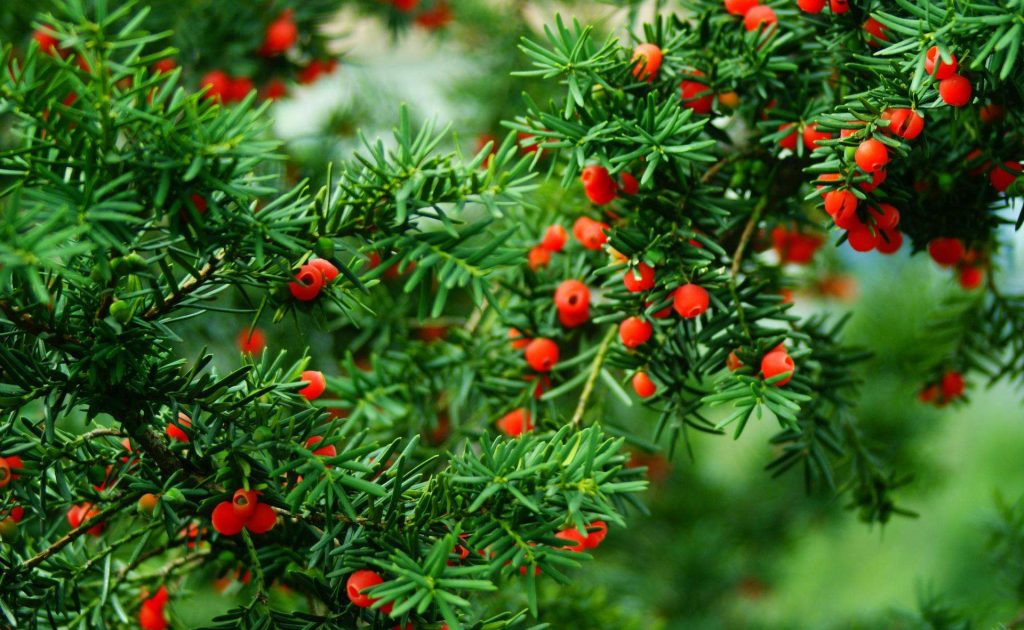Taxus media seed

Taxus x media is a hybrid designation for a large number of shrubby, often wide-spreading crosses of English yew (Taxus baccata) and Japanese yew (Taxus cuspidata).
These hybrids are noted for combining the ornamental excellence of English yew with the winter hardiness of Japanese yew. Although primarily resembling T. cuspitata in appearance, the various hybrid cultivars can vary considerably in size and character.
Height ranges from 2-20′ tall depending on the cultivar. Two ranked, pointed, oblong to needle-like, olive to dark green leaves are attractive year round. Bark is scaly brown. Plants are dioecious (separate male and female plants).
Female plants produce red, berry-like fruits instead of cones. Each fruit has a single seed almost completely surrounded by a fleshy red aril. All parts of this plant are poisonous if ingested.
Medicinal use of Yew: The yew tree is a highly toxic plant that has occasionally been used medicinally, mainly in the treatment of chest complaints. Modern research has shown that the plants contain the substance “taxol” in their shoots. Taxol has shown exciting potential as an anti-cancer drug, particularly in the treatment of ovarian cancers.
This remedy should be used with great caution and only under the supervision of a qualified practitioner. All parts of the plant, except the fleshy fruit, are antispasmodic, cardiotonic, diaphoretic, emmenagogue, expectorant, narcotic and purgative. The leaves have been used internally in the treatment of asthma, bronchitis, hiccup, indigestion, rheumatism and epilepsy. Externally, the leaves have been used in a steam bath as a treatment for rheumatism. A homeopathic remedy is made from the young shoots and the berries. It is used in the treatment of many diseases including cystitis, eruptions, headaches, heart and kidney problems, rheumatism etc.
Edible parts of Yew: Fruit – raw. Very sweet and gelatinous, most people find it delicious though some find it sickly. A number of people who like the flavor do not like the texture which is often described as being “snotty”. All other parts of this plant, including the seed, are highly poisonous. When eating the fruit you should spit out the large seed found in the fruit’s center. Should you swallow the whole seed it will just pass straight through you without harm. If it is bitten into, however, you will notice a very bitter flavor and the seed should immediately be spat out or it could cause some problems. The fruit is a fleshy berry about 10 mm in diameter and containing a single seed. Some reports suggest using the bark as a tea substitute, this would probably be very unwise.
Other uses of the herb: . A decoction of the leaves is used as an insecticide. Wood – heavy, hard, durable, elastic, takes a good polish but requires long seasoning. Highly esteemed by cabinet makers, it is also used for bows, tool handles etc. It makes a good firewood. The wood is burnt as an incense.
